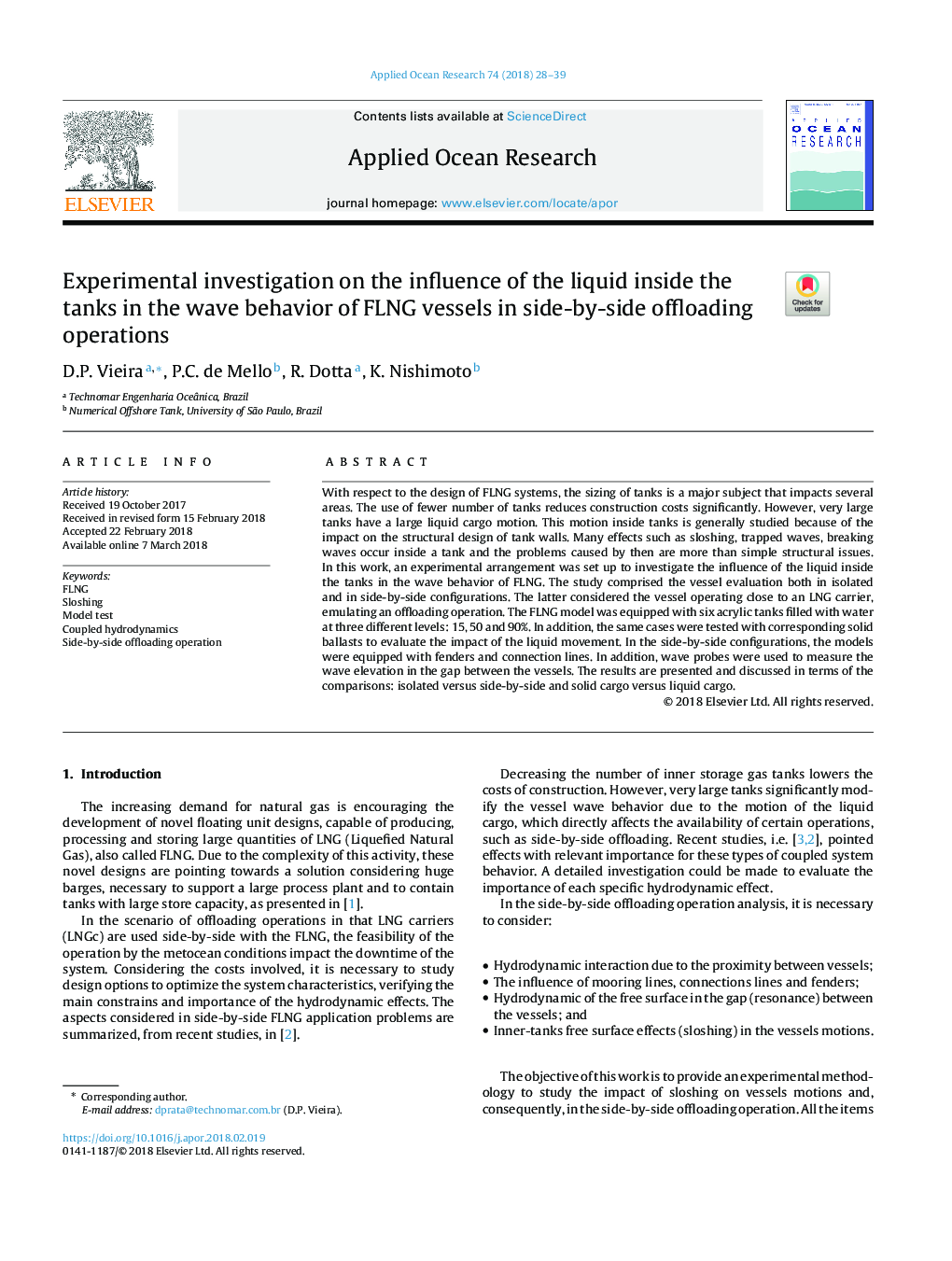| Article ID | Journal | Published Year | Pages | File Type |
|---|---|---|---|---|
| 8059279 | Applied Ocean Research | 2018 | 12 Pages |
Abstract
With respect to the design of FLNG systems, the sizing of tanks is a major subject that impacts several areas. The use of fewer number of tanks reduces construction costs significantly. However, very large tanks have a large liquid cargo motion. This motion inside tanks is generally studied because of the impact on the structural design of tank walls. Many effects such as sloshing, trapped waves, breaking waves occur inside a tank and the problems caused by then are more than simple structural issues. In this work, an experimental arrangement was set up to investigate the influence of the liquid inside the tanks in the wave behavior of FLNG. The study comprised the vessel evaluation both in isolated and in side-by-side configurations. The latter considered the vessel operating close to an LNG carrier, emulating an offloading operation. The FLNG model was equipped with six acrylic tanks filled with water at three different levels: 15, 50 and 90%. In addition, the same cases were tested with corresponding solid ballasts to evaluate the impact of the liquid movement. In the side-by-side configurations, the models were equipped with fenders and connection lines. In addition, wave probes were used to measure the wave elevation in the gap between the vessels. The results are presented and discussed in terms of the comparisons: isolated versus side-by-side and solid cargo versus liquid cargo.
Keywords
Related Topics
Physical Sciences and Engineering
Engineering
Ocean Engineering
Authors
D.P. Vieira, P.C. de Mello, R. Dotta, K. Nishimoto,
